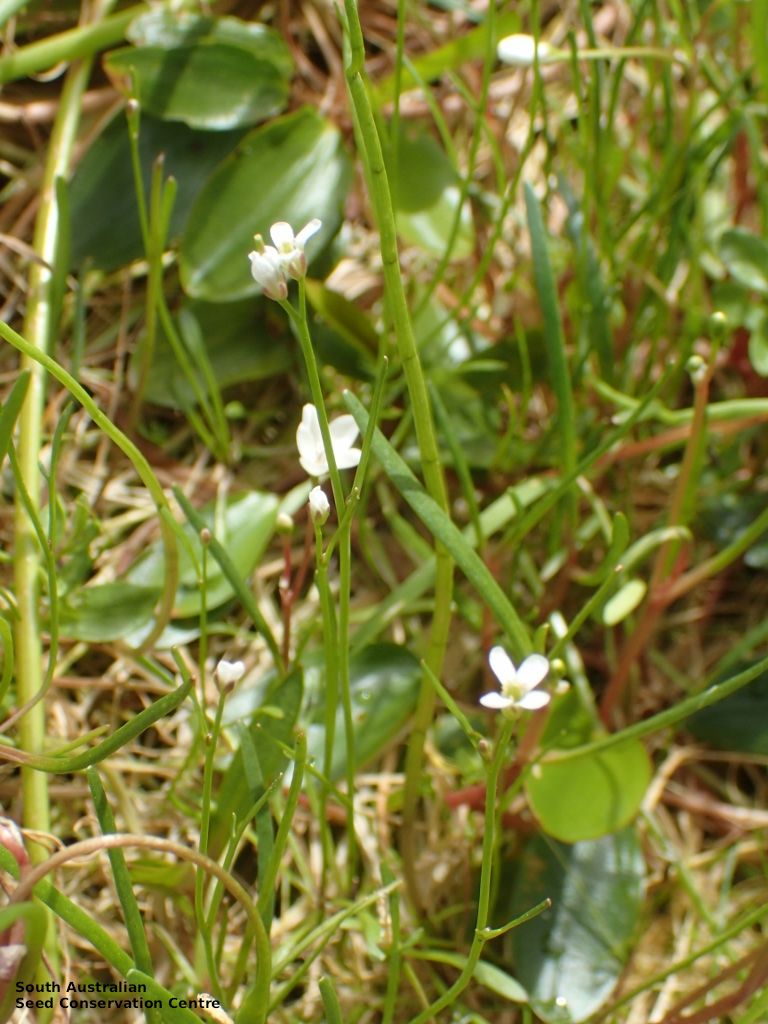
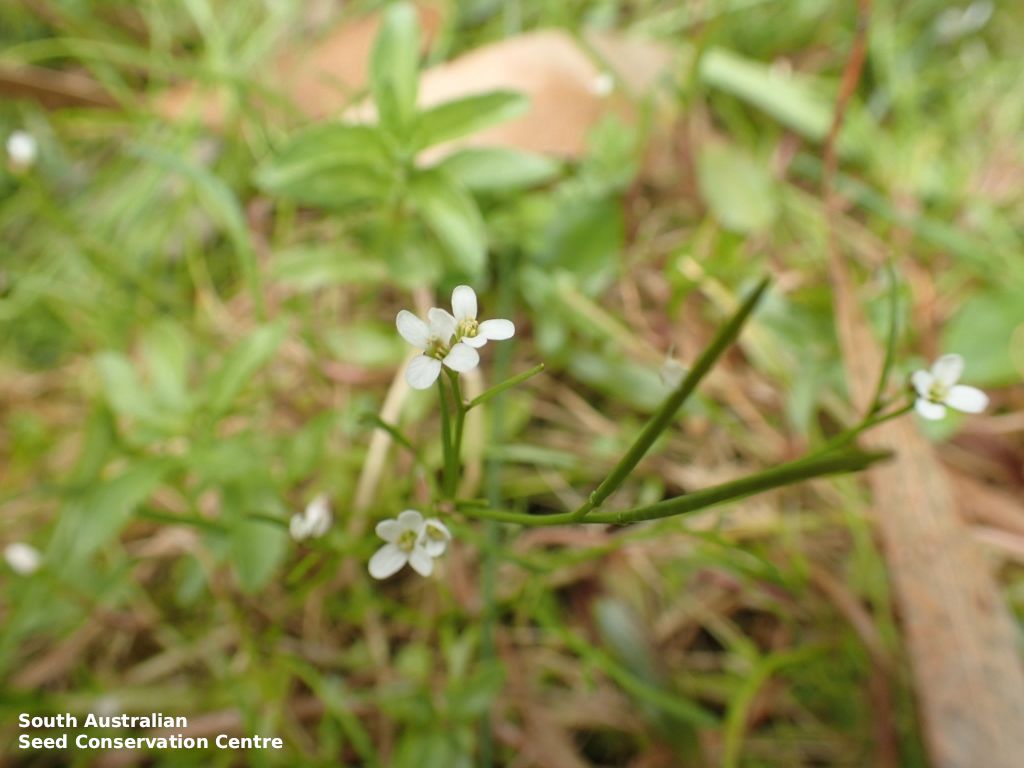
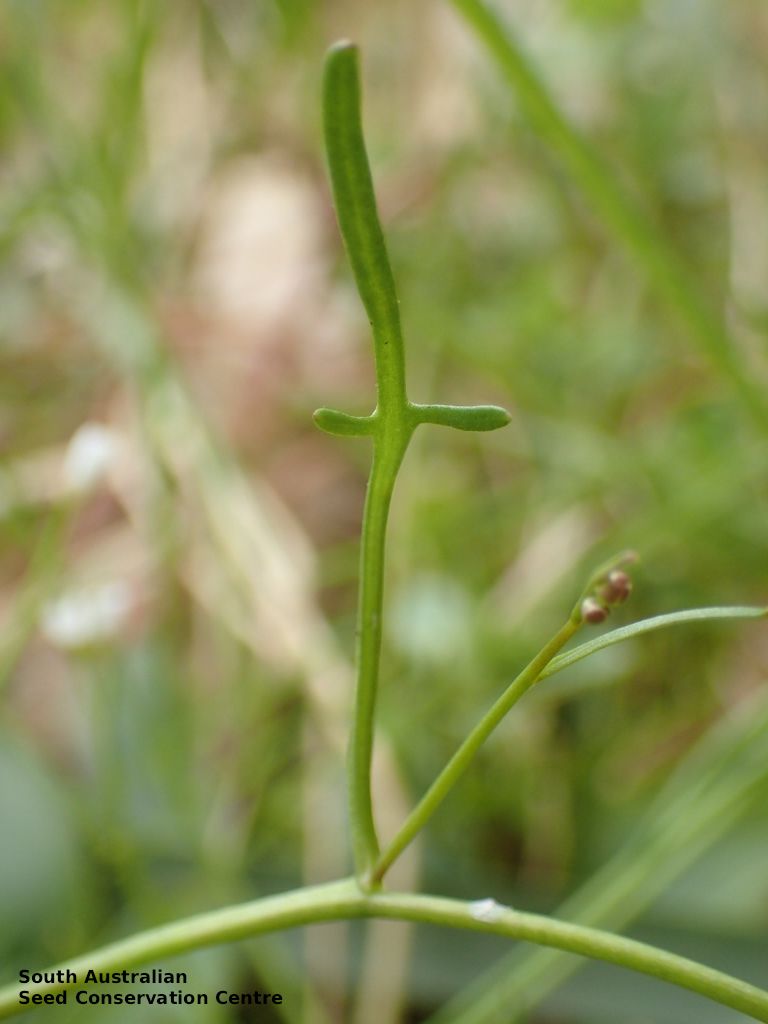
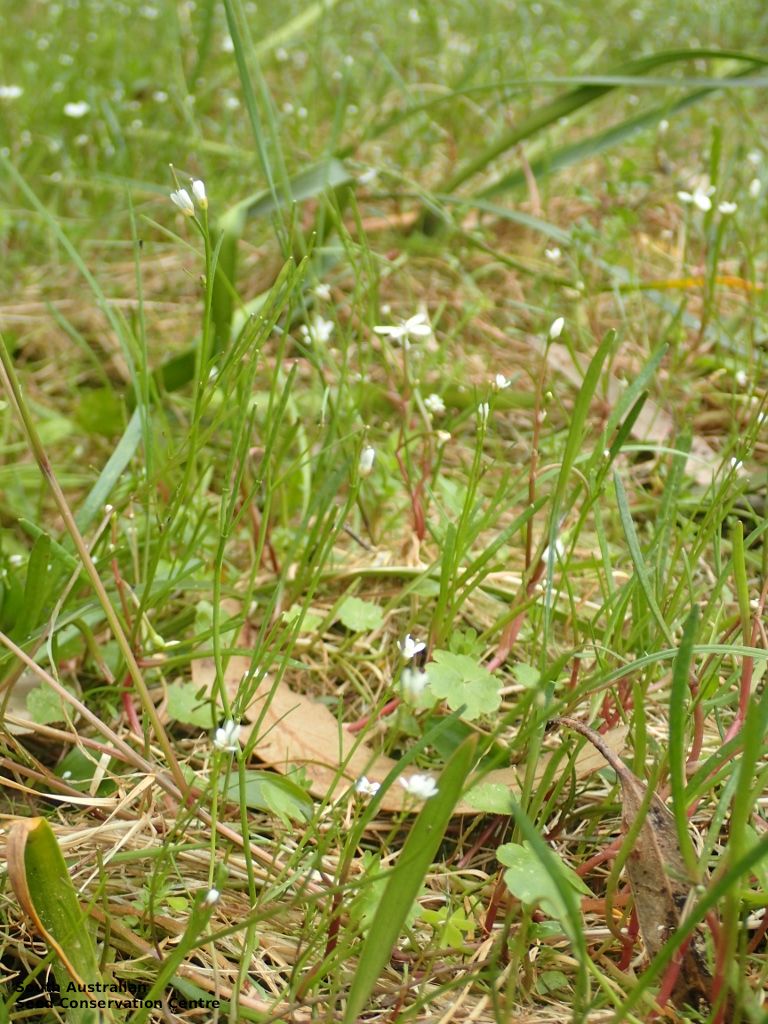
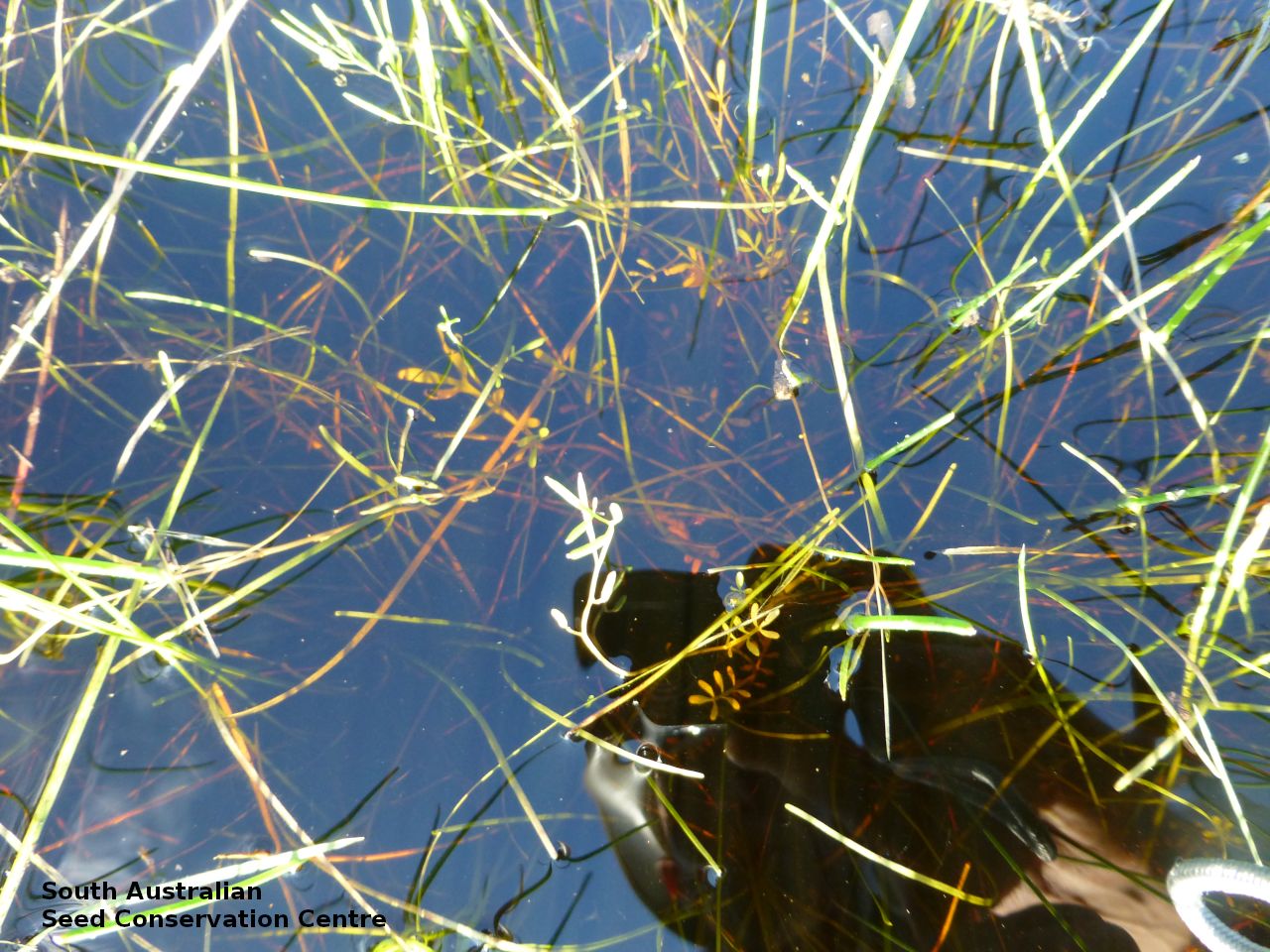
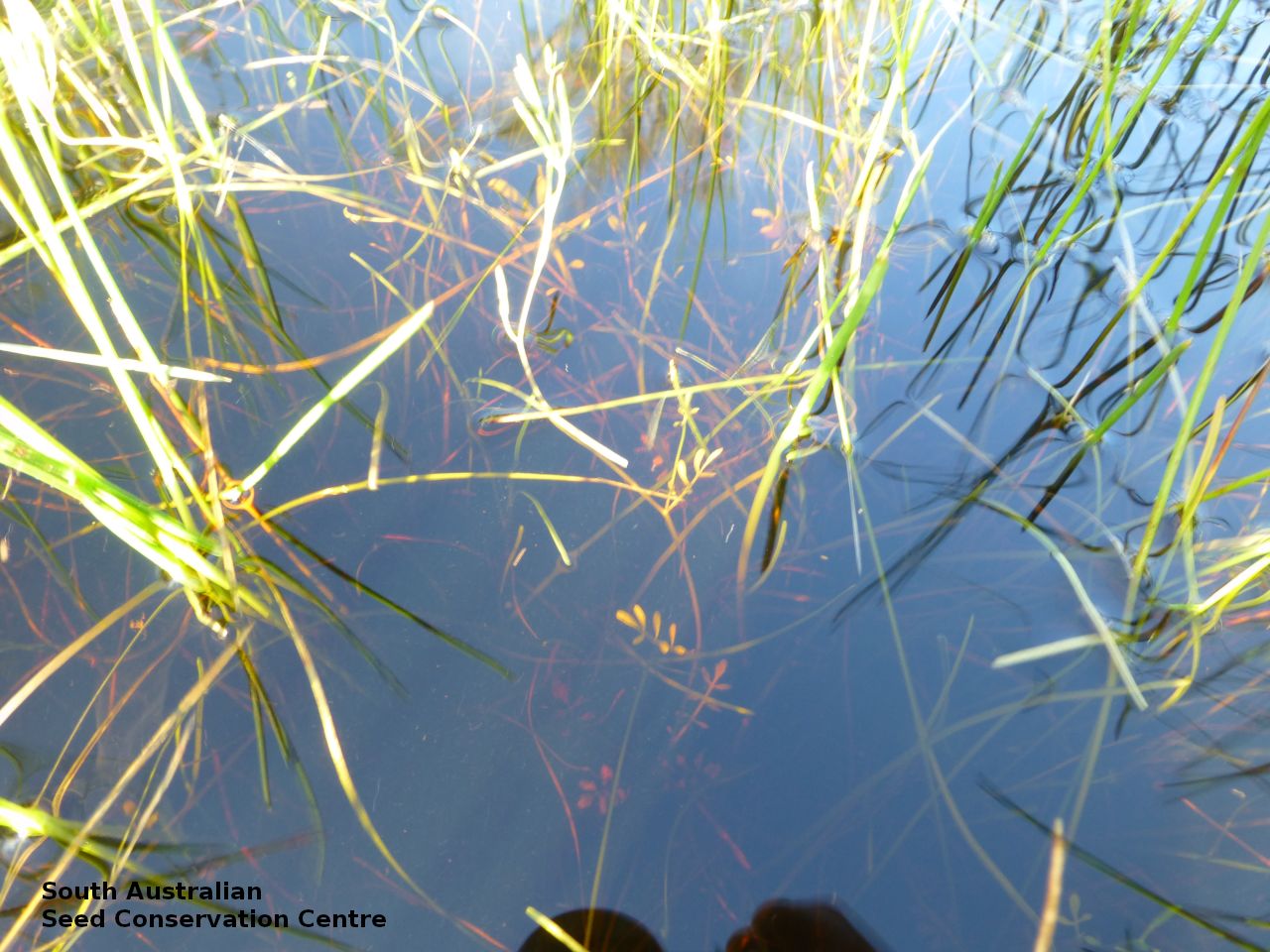
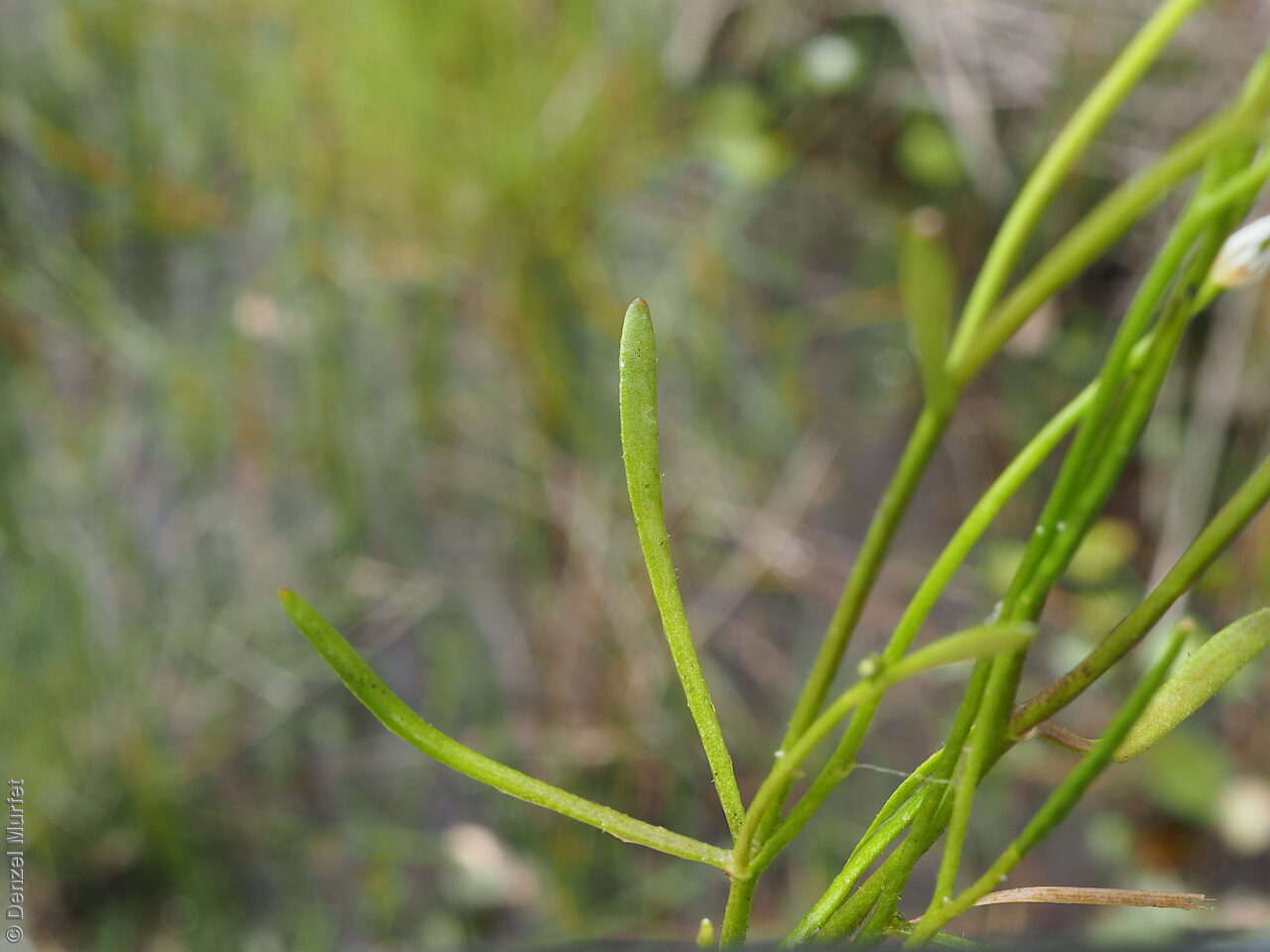
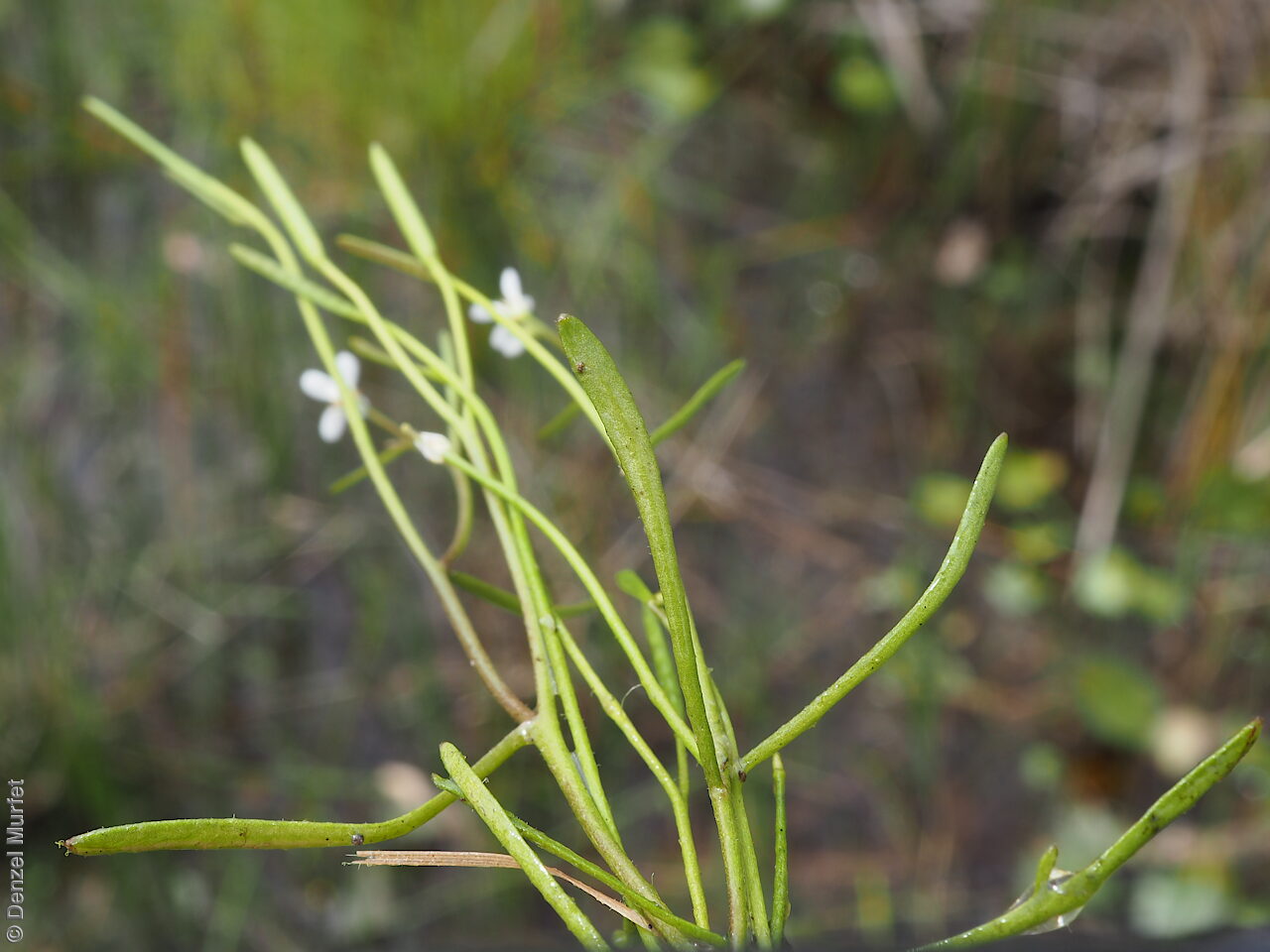
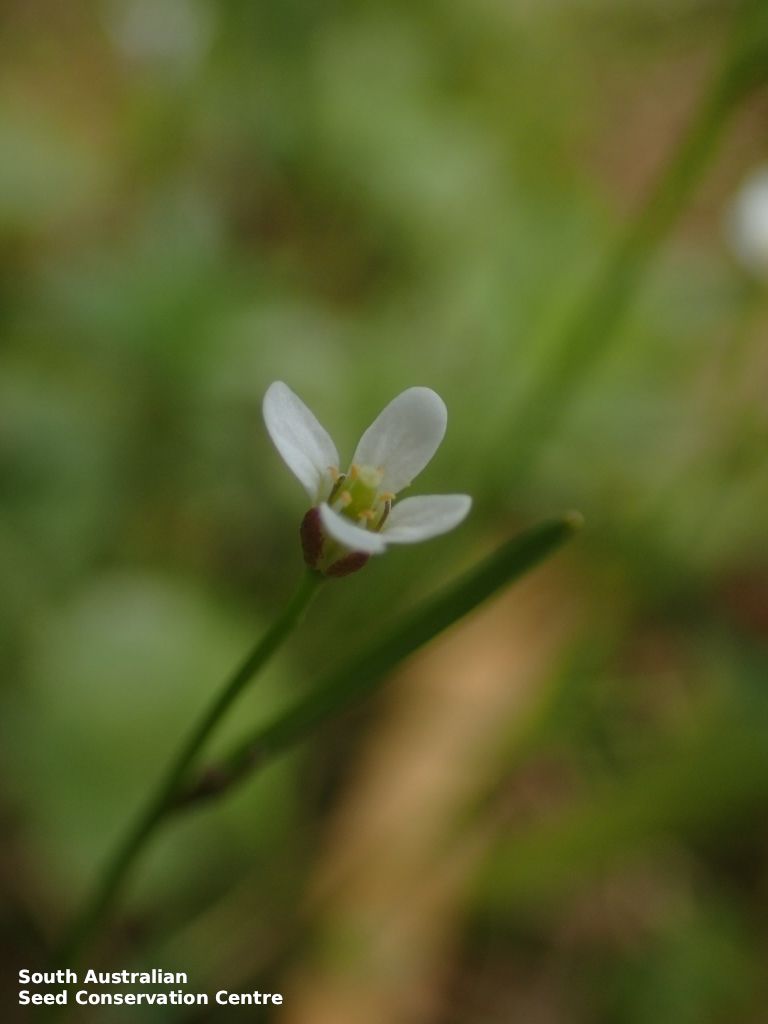
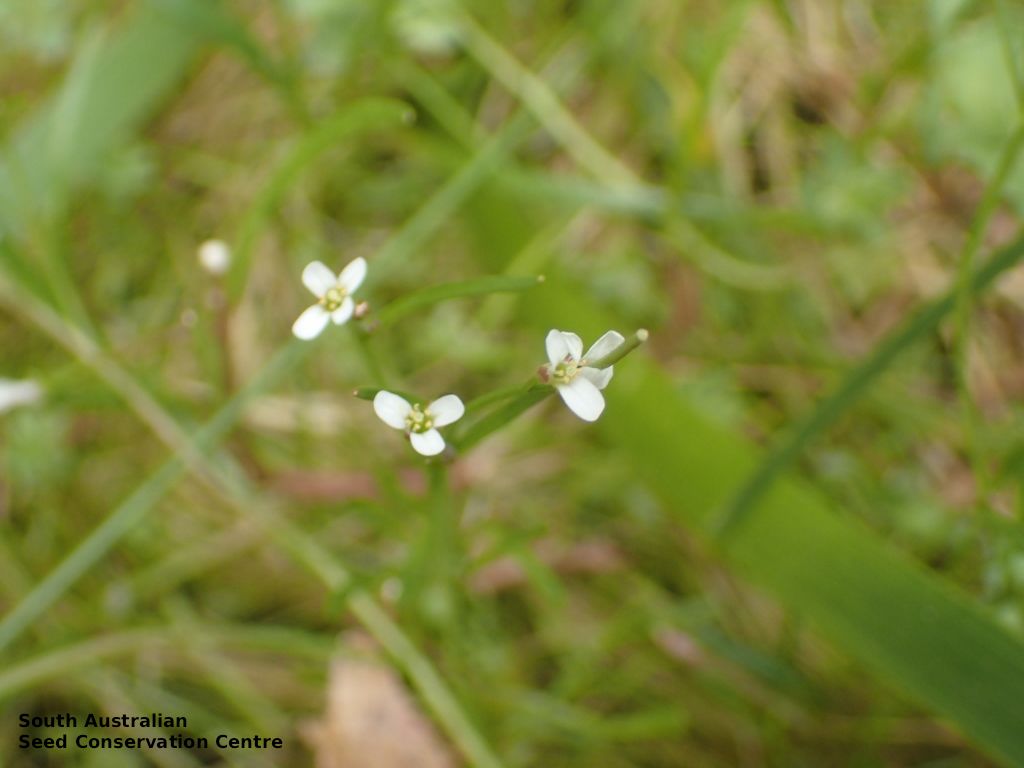
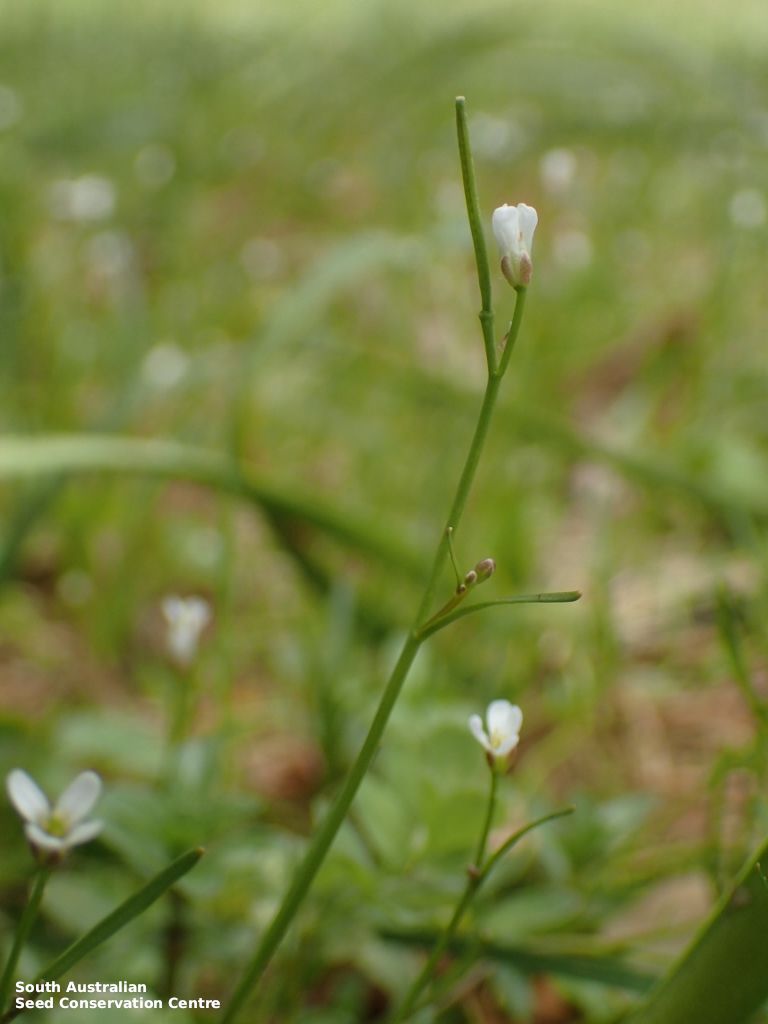
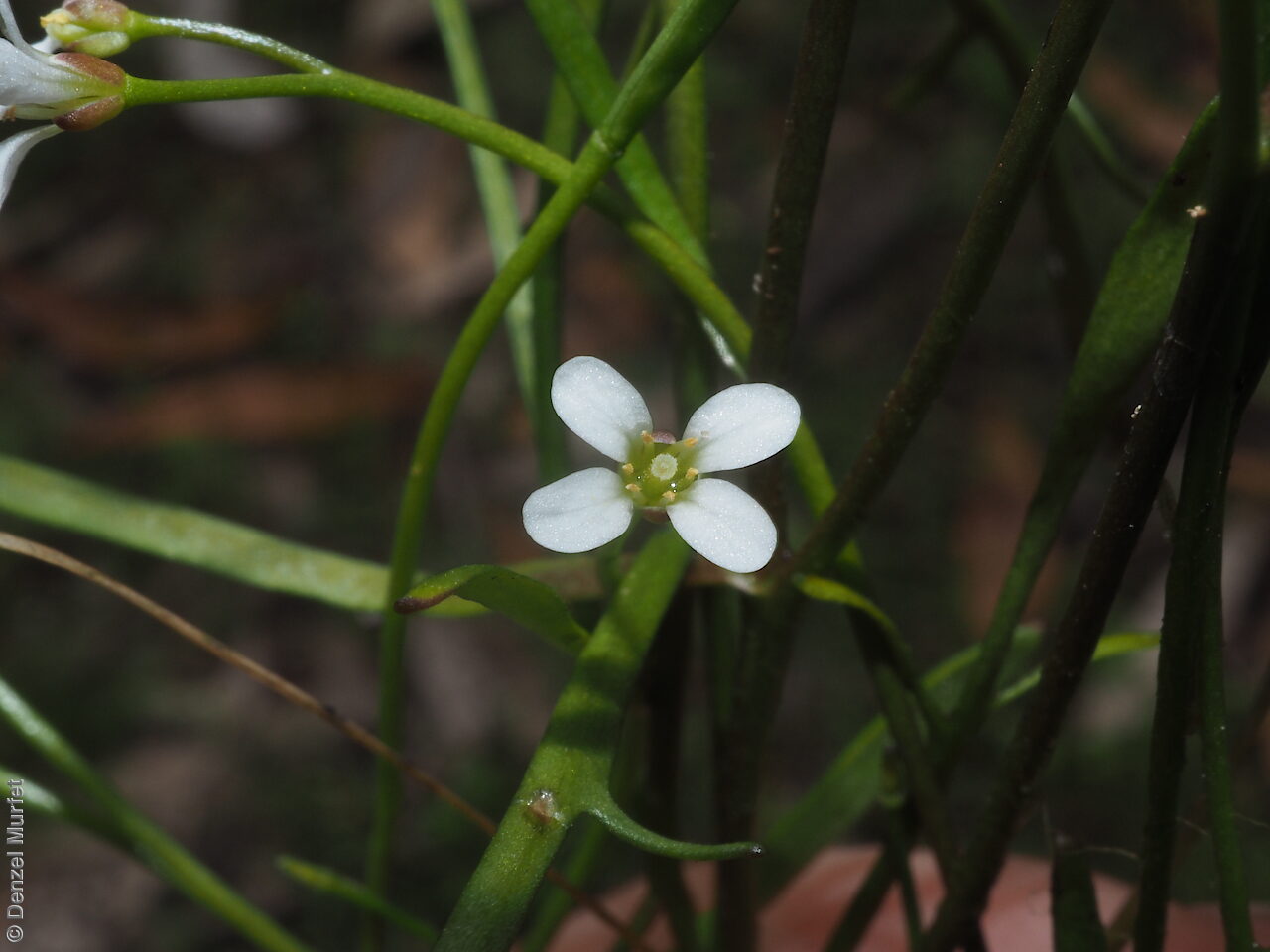
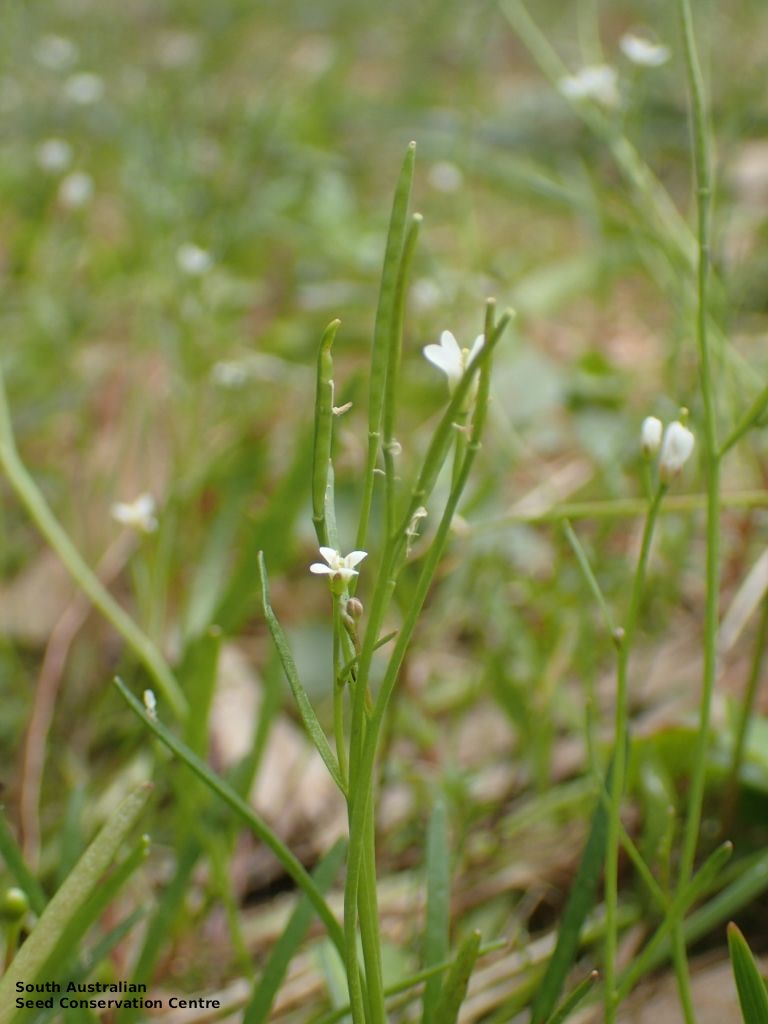
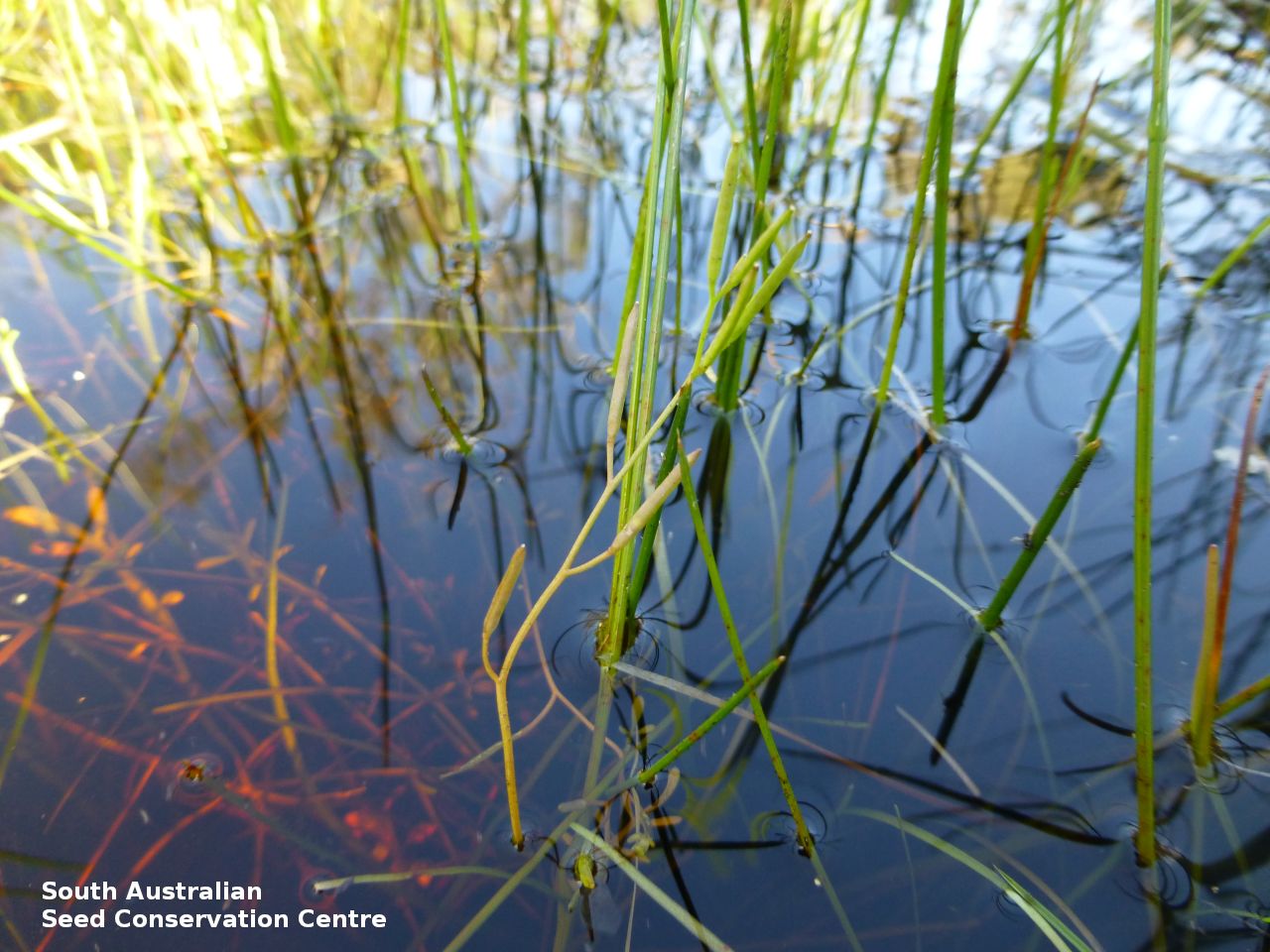
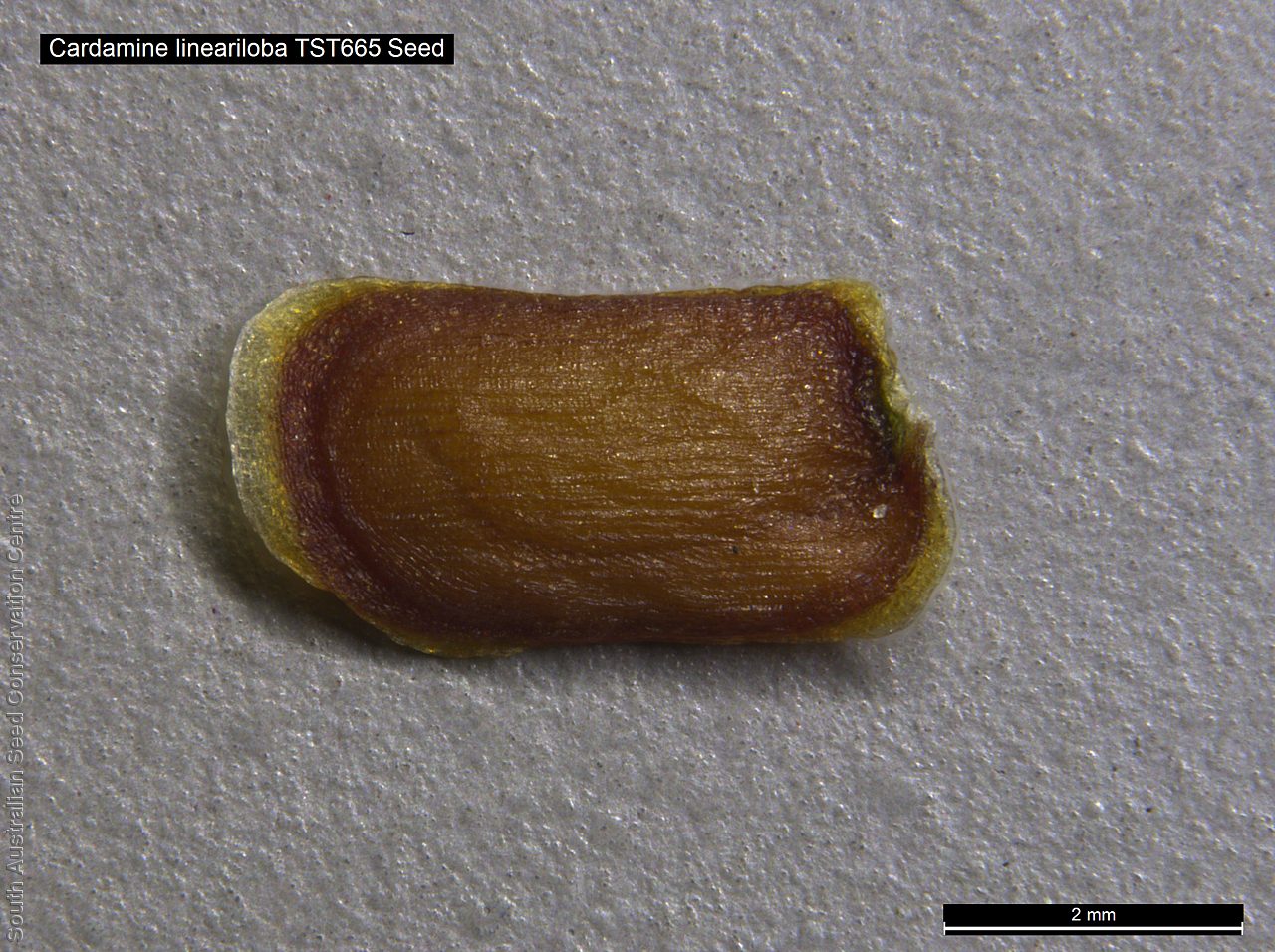
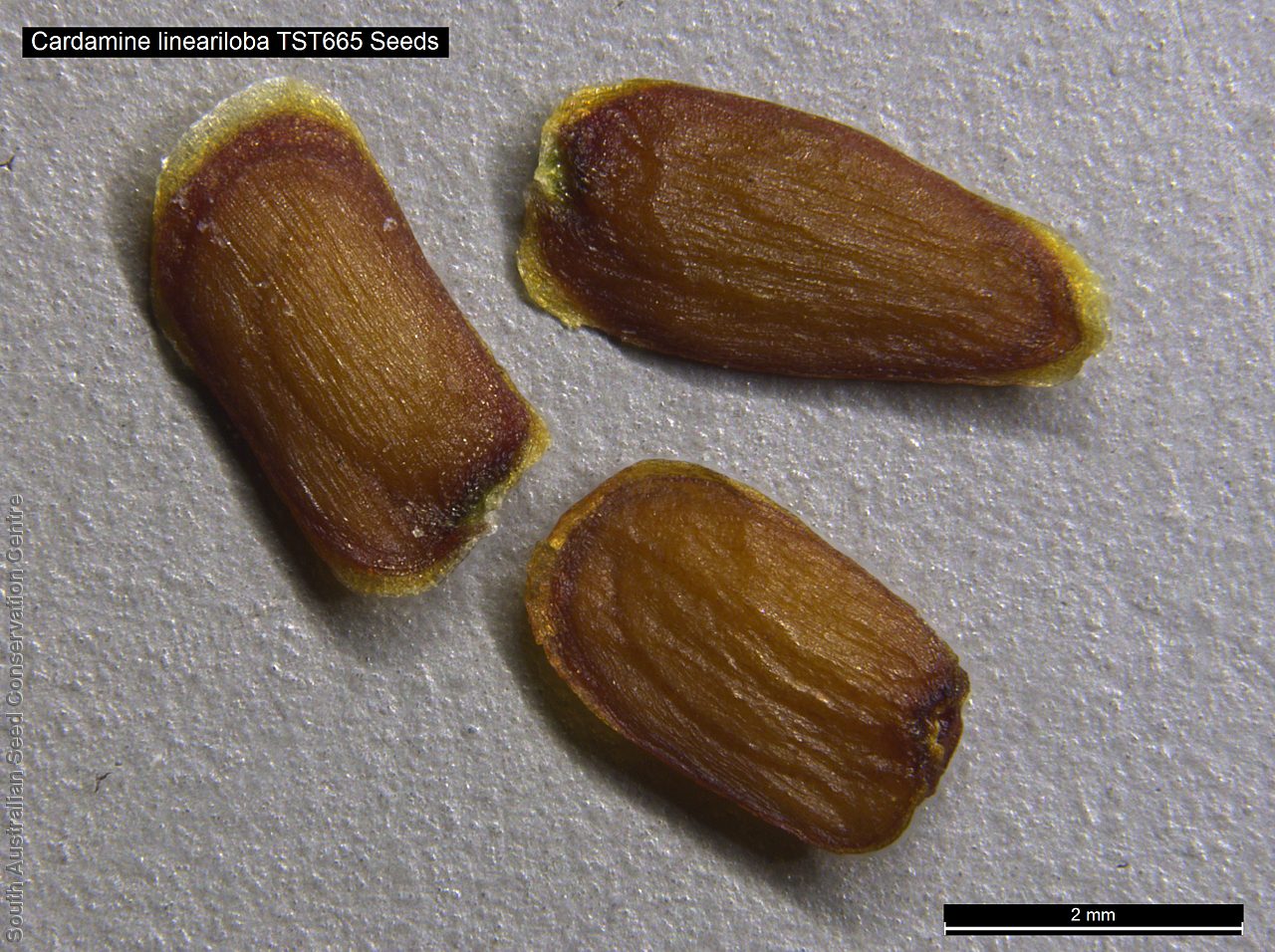


Botanical art
Etymology
Cardamine from the Greek 'kardamon', a name given by Dioscorides for a species of cress, an Indian spice and derived from the Greek 'cardia' meaning heart and 'damaein' meaning to blind, alluding to the reputed heart-strengthening effects of the plant. Lineariloba from the Latin 'linearis' meaning linear, straight and 'lobos' meaning lobe, referring to the species linear leaf lobes.
Distribution and status
Found in the South-east in South Australia growing in drainage lines, saline flats and on streambanks. Old record from Myponga but now assumed extinct in the Mount Lofty Ranges. Also found in Victoria. Native. Rare in South Australia. Rare in Victoria.
Herbarium regions: Southern Lofty, South Eastern
NRM regions: Adelaide and Mount Lofty Ranges, South East
AVH map: SA distribution map (external link)
Plant description
Glabrous annual herb to 25 cm high, tap-rooted or fibrous rooted with slender, erect to ascending stems. Basal leaves to 7 cm long, forming a rosette; simple, entire and narrowly spatulate to almost linear, or pinnately divided with 1-4 forward projecting, linear lateral lobes and a much longer terminal lobe. Stem leaves similar. Flower spike with few white flowers. Flowering in late August to October. Fruits are long pale brown pods to 2 cm in length, splitting into two. Seeds are small yellow flat reniform seeds to 1 mm long and 0.7 mm wide. Seed embryo type is bent.
Seed collection and propagation
Collect seeds between September and December. Collect maturing pods those turning pale brown with yellow seeds inside. Be gentle with the pods as they split open easily. Place the pods in a tray and cover with paper to prevent seeds from popping out and leave to dry for a week. Then rub the dried pods gently by hand to dislodge the seeds. Use a sieve to separate the unwanted material. Store the seeds with a desiccant such as dried silica beads or dry rice, in an air tight container in a cool and dry place. Seed viability is usually high. This species has physiological dormancy that need to be overcome for the seed to germinate.
| Location | No. of seeds (weight grams) | Number of plants | Date collected | Collection number Collection location | Date stored | % Viability | Storage temperature |
|---|---|---|---|---|---|---|---|
| BGA MSB | 1,700 (0.2 g) 1,700 (0.2 g) | 50+ | 27-Sep-2013 | DJD2758 South Eastern | 24-Mar-2015 | 100% | -18°C |
Number of plants: This is the number of plants from which the seeds were collected.
Collection location: The Herbarium of South Australia's region name.
% Viability: Percentage of filled healthy seeds determined by a cut test or x-ray.